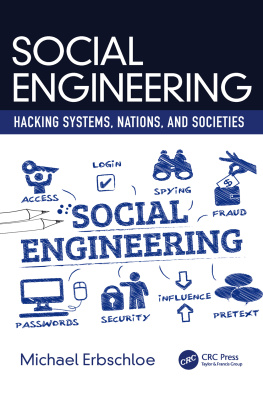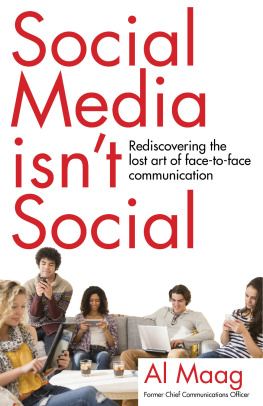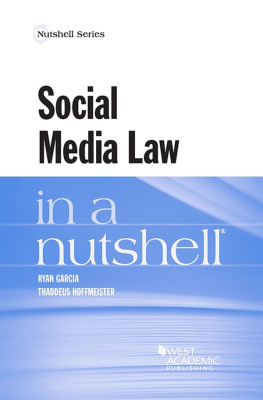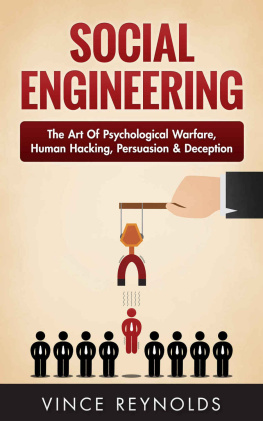Writing this book was enlightening in many ways. The breadth of social media warfare tactics used is surprisingly extensive in all sectors including efforts to fight terrorism, combat crime, and provide a forum for special interest groups. What is disturbing is how much social media is used for evil purposes. Much of the rhetoric of evil was omitted from this book because it is disgusting. The volume of hate and oppression in social media is, unfortunately, a reflection of how much evil exists in the world. Although there is much good accomplished using social media, whether it is to support open government, discussion of health and environmental issues, and often just good entertainment, evil people in the world have equal access to social media weapons. That, however, is the nature of free speech, and that speech is protected regardless of an individuals or groups perspectives and philosophies. The World Wide Web and the pre-social media tools took more effort to use than social media applications. Thus, when easy-to-use social media applications arrived at the Internet, so did the deplorable citizenry of the world. Social media was so easy for this deplorable citizenry because proper grammar and correct spelling went by the wayside, as quickly as nasty attitudes and bad manners proliferated like weeds across the new medium. The great commentator, Edward R. Murrow, once said that The speed of communications is wondrous to behold. It is also true that speed can multiply the distribution of information that we know to be untrue.
Michael Erbschloe
active deception: measures designed to mislead by causing an object or situation to seem threatening when a threat does not exist; it normally involves a calculated policy of disclosing half-truths supported by appropriate proof signals or other material evidence.
advance fee fraud: are fee schemes that require victims to advance relatively small sums of money in the hope of realizing much larger gains. Not all advance fee schemes are investment frauds. In those that are, however, victims are told that in order to have the opportunity to be an investor (in an initial offering of a promising security, investment, or commodity, for example), the victim must first send funds to cover taxes or processing fees, and so on.
affinity fraud: perpetrators of affinity fraud take advantage of peoples tendency to trust others with whom they share similarities, such as religion or ethnic identity, to gain their trust and money.
alternative master narratives: are designed to replace violent extremist narrative by offering an entire cultural, political, or social philosophy that eliminates the appeal of the extremist narrative.
alternative narratives: are narratives that are designed to replace radical or extremist narratives, and which are intended to provide viable alternatives to radicalization.
asymmetric warfare: is warfare in which belligerents are mismatched in their military capabilities or their accustomed methods of engagement.
A-team, B-team: is an experimental method developed within the intelligence community in the mid-1970s to improve the quality of national intelligence estimates on important warning problems through competitive and alternative analysis. The A-team usually includes U.S. intelligence analysts, while the B-team consists of members outside of the intelligence community. Both teams look at identical warning problems and take different sides of an issue.
backdoor: a backdoor generally circumvents security programs and provides access to a program, an online service, or an entire computer system. It can be authorized or unauthorized, documented or undocumented.
best practices: are techniques or methodologies that, through experience and research, have reliably led to a desired or optimum result.
bias-free police and court practices: are criminal justice practices that do not discriminate against any type of minority and treat all citizens equally.
biometrics: is the science of using one or more unique physical characteristic or behavioral trait to identify individuals.
chain of custody: is a process used to maintain and document the chronological history of evidence. Documents should include name or initials of the individual collecting the evidence, each person or entity subsequently having custody of it, dates the items were collected or transferred, agency and case number, victims or suspects name, and a brief description of the item.
chaos factor: is a condition that occurs as a result of the unsettled and disrupted routine operations of an organizations or a facility, and an atmosphere of disorder and confusion prevails.
chat group: is an Internet site that allows users to engage in large group conversation.
child pornography: is sexually explicit or themed images or recordings involving minors less than 18 years of age.
child sexual exploitation: is the recruiting or involvement of minors less than 18 years of age in any sexual capacity.
citizen diplomacy: is diplomacy performed by non-professional diplomats to promote specific cultural or political agendas on behalf of their country.
citizen journalist: is an individual that uses technology such as smartphones to record police or government representative actions and disseminate that evidence to the community at large and to interested activists.
civil society leaders: are individuals who hold government, business, or religious positions that enable them to influence their societies, communities, and individuals.
civilian oversight boards: are independent boards not comprised of police officials or officers that review and examine complaints of police misconduct.
common operating picture: is the mutual understanding and common vision of what actions all players will take to address a situation.
community engagement strategy: is a policing strategy that brings citizens and civic groups into a partnership with policing practices and public safety concerns.
community resilience: is the social beliefs and norms of a local population that enables the community to resist radicalization and neutralizes the impact of the radical narrative.
community-targeted approach: is a set of methods and techniques designed to engage individuals or groups in the communities where they live to diminish the possibility of radicalization and to identify radicalized individuals or groups.
compromise: is a violation of the security policy of a system such that unauthorized disclosure of sensitive information may have occurred.
computer fraud: is crime involving deliberate misrepresentation, alteration, or disclosure of data in order to obtain something of value (usually for monetary gain).
computer use surveillance: is a process that tracks and records what users do or attempt to do when using corporate computer systems.
consolidated registry: is a mechanism the U.S. military services use to inventory, approve, and authenticate social media use throughout all levels of the services.
constitutional and effective policing: is the use of policing practices that simultaneously protect the constitutional rights of citizens while effectively addressing public safety concerns.
consumer-generated content: is digital content that is produced by self-publishers and sometimes picked up or referenced in traditional media.
corroborating evidence: is evidence that tends to support a proposition that is already supported by some evidence.
counter messaging: is the process of matching radical extremist messages on a head-to-head basis in order mitigate the recruitment and radicalization to violent extremism.
countermeasure: is any action, device, procedure, technique, or other measure that reduces the vulnerability of or threat to a system.
counter narrative to radicalization: is a narrative that neutralizes or invalidates the narrative designed to radicalize individuals or groups.
Next page








